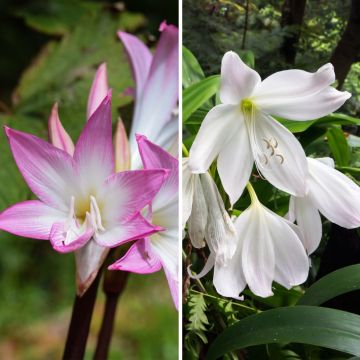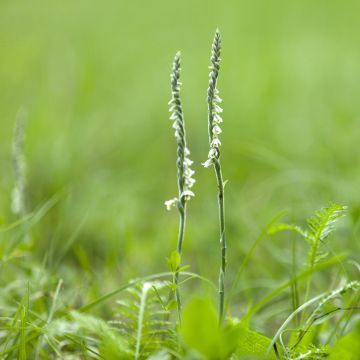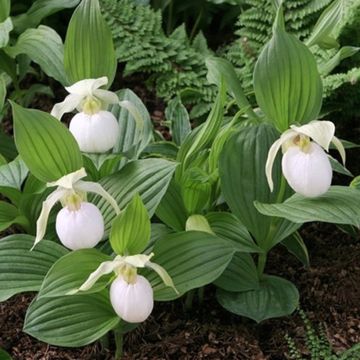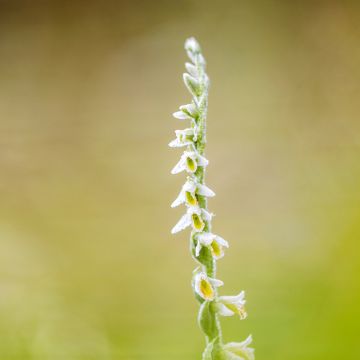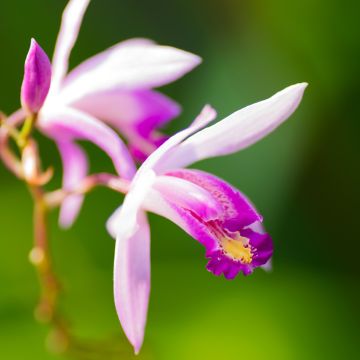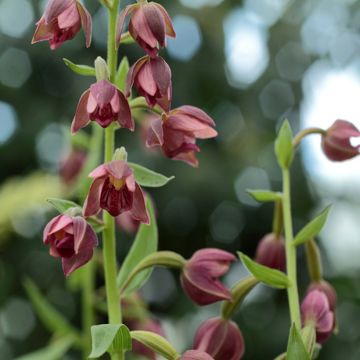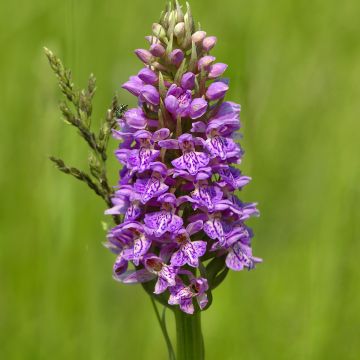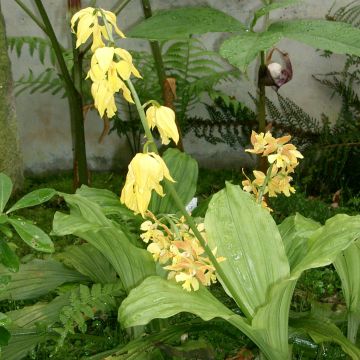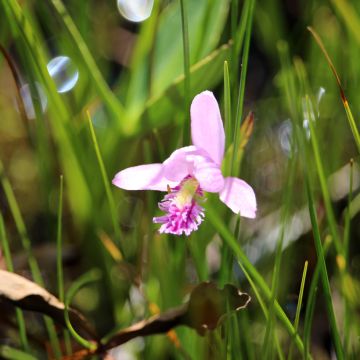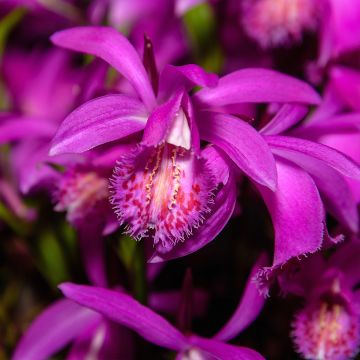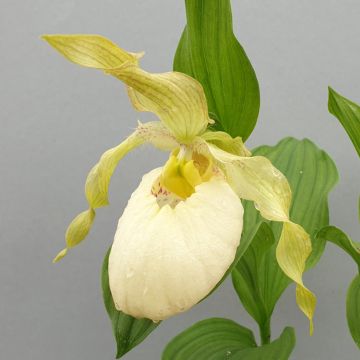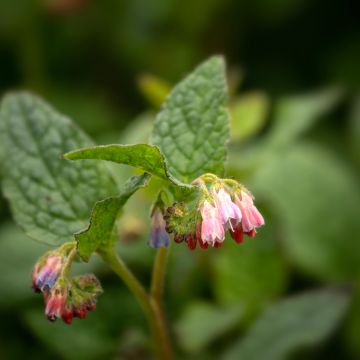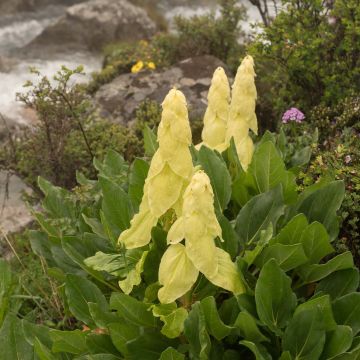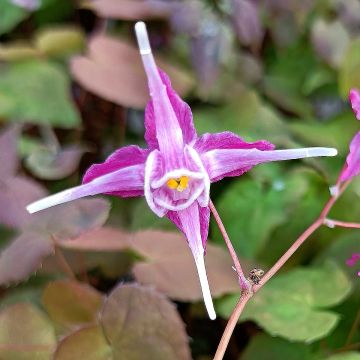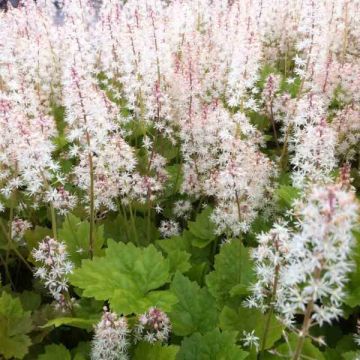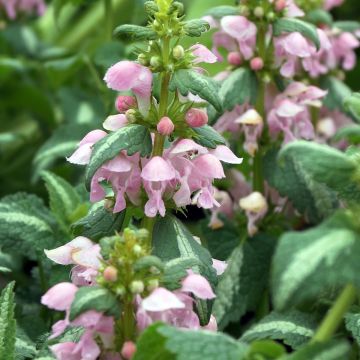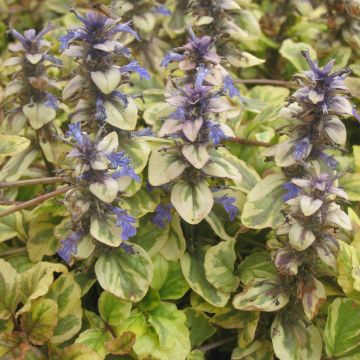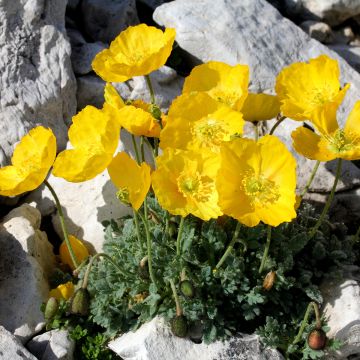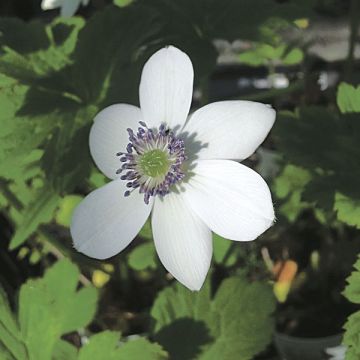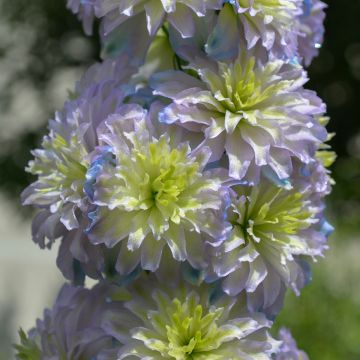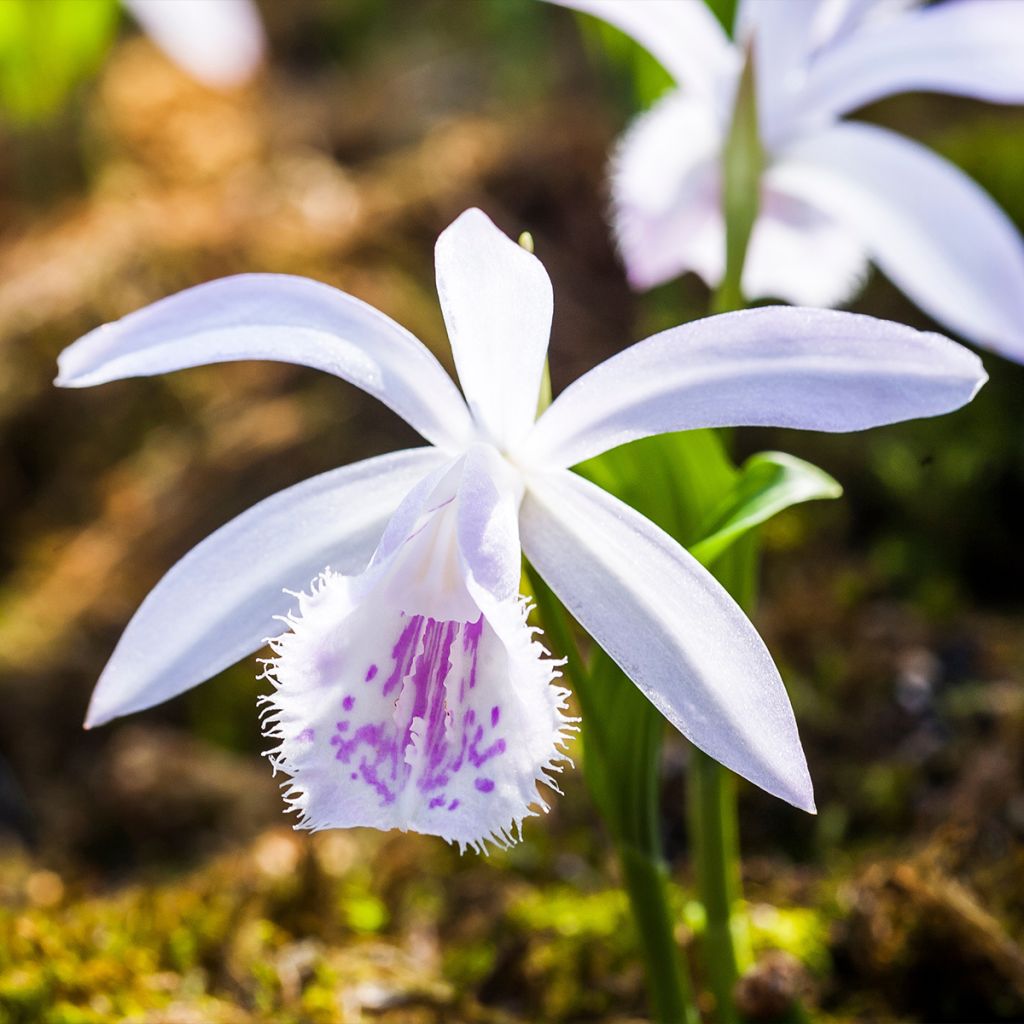

Pleione Glacier Peak - Orchidée terrestre
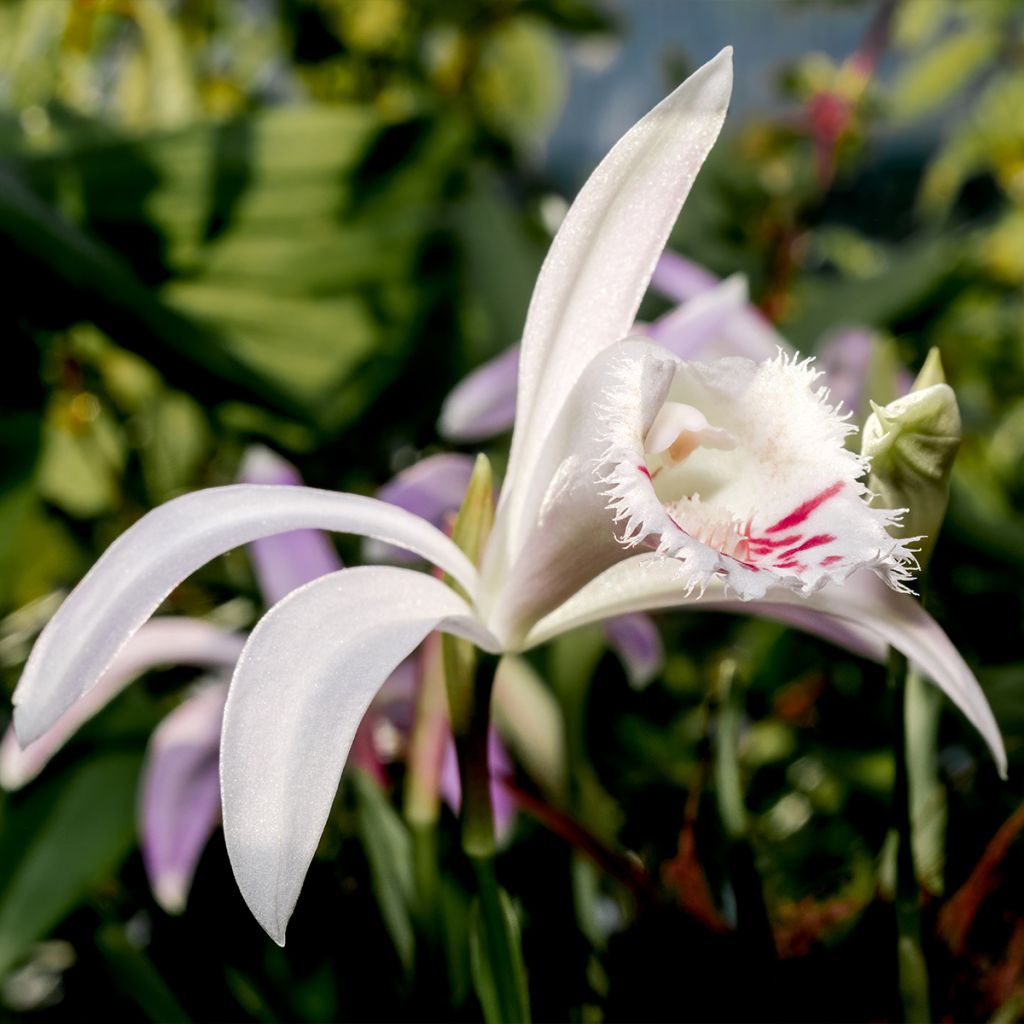

Pleione Glacier Peak - Orchidée terrestre
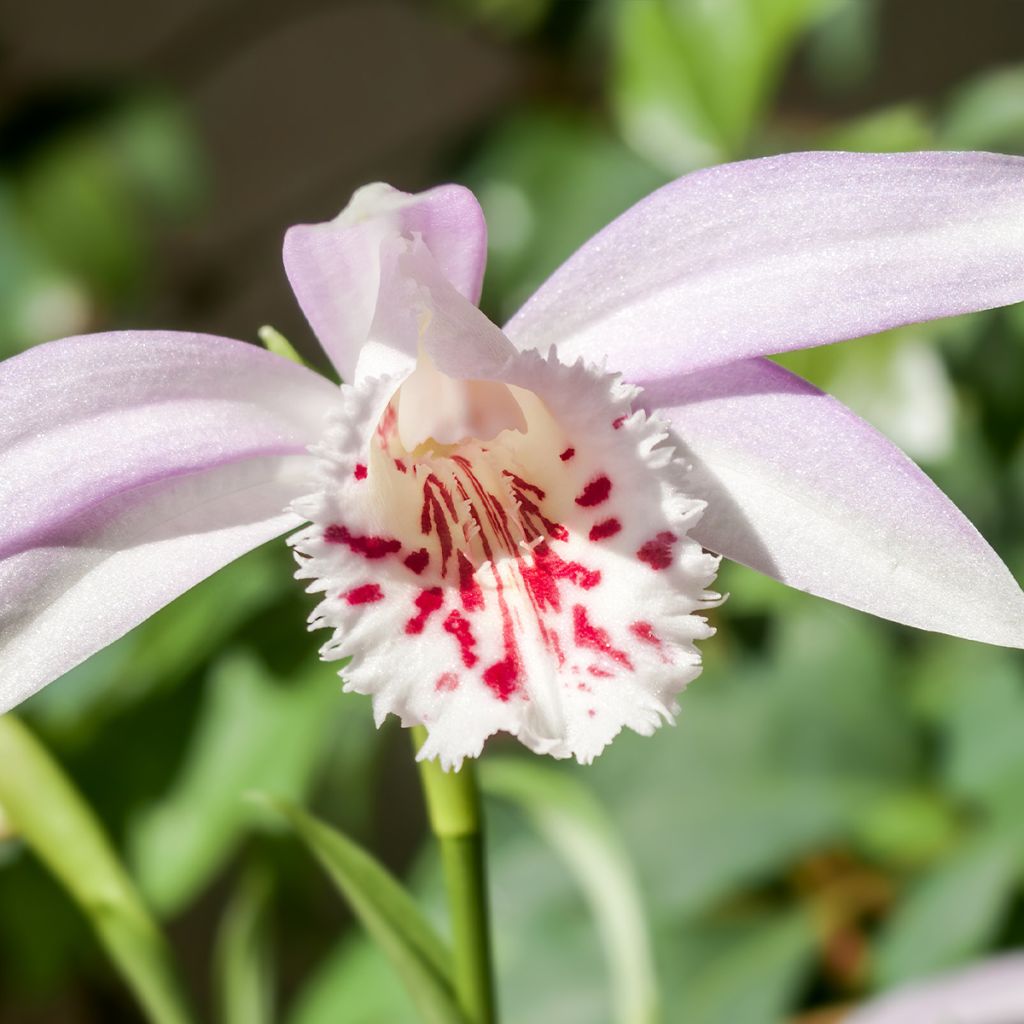

Pleione Glacier Peak - Orchidée terrestre
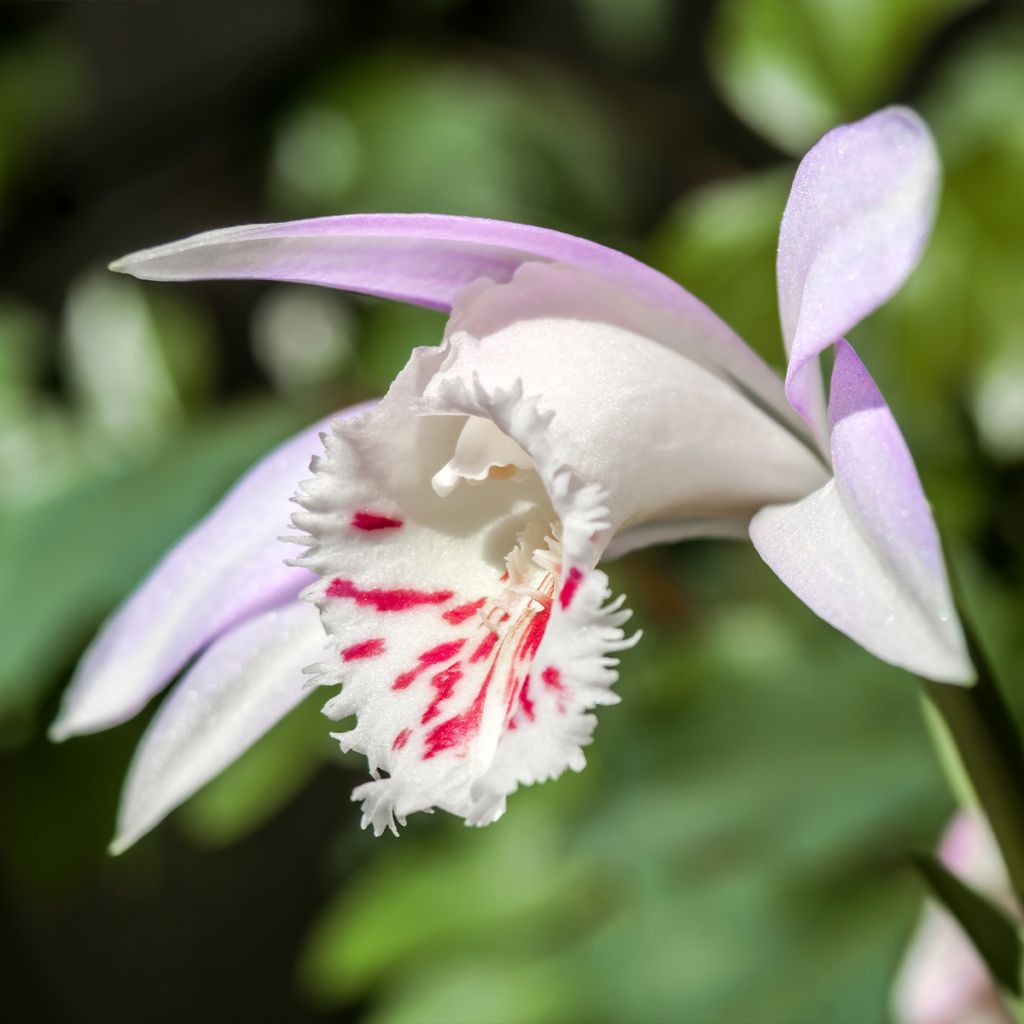

Pleione Glacier Peak - Orchidée terrestre
Pleione Glacier Peak
Pleione formosana alba x grandiflora Glacier Peak
Windowsill orchid
Why not try an alternative variety in stock?
View all →This plant carries a 12 months recovery warranty
More information
We guarantee the quality of our plants for a full growing cycle, and will replace at our expense any plant that fails to recover under normal climatic and planting conditions.
From €5.90 for pickup delivery and €6.90 for home delivery
Express home delivery from €8.90.
Does this plant fit my garden?
Set up your Plantfit profile →
Description
The Pleione hybrid 'Glacier Peak' is a small orchid that will delight collectors with its spring flowers, which are large for a Pleione. With a characteristic shape, these white flowers have a tubular and fringed labellum, the inside of which is yellow and speckled with orange-brown. It is a rhizomatous orchid that develops pseudobulbs as reserve organs. Semi-hardy, requiring a dry winter rest, this variety is easier to cultivate in a pot. In regions with mild winters, it can be planted between rocks in a semi-shaded rockery in a pocket of compost protected from winter rains.
Pleione 'Glacier Peak' is a hybrid resulting from the cross-breeding of the Alba Pleione formosana and P. grandiflora. All Pleiones are Asian plants native to high-altitude subtropical rainforests. They belong to the orchid family. These orchids are more easily cultivated in a cool greenhouse with a period of winter dormancy. Although biologically more epiphytic (growing on trees), Pleiones can also be grown in well-drained compost like other garden orchids (Cypripediums, for example).
Pleione 'Glacier Peak' has deciduous foliage, absent in winter. An adult plant measures approximately 25cm (10in) in all directions. From the end of winter, sometimes already in March, the plant produces new young shoots. Flowering takes place in April-May. Each bulb produces one or two flower stalks, each bearing a solitary flower measuring approximately 12cm (5in). Each flower is composed of long and slender sepals and petals surrounding a large fringed trumpet-shaped labellum. After flowering, this orchid produces leaves as well as new pseudobulbs emerging from the initial pseudobulb. The 15cm (6in) long leaves are lanceolate, elliptical, and folded, with a medium green colour. In autumn, the leaves turn yellow and fall, and the plant enters winter dormancy. The plant survives thanks to the reserves contained in its pseudobulbs. In the following spring, the new bulb(s) will form new ones, allowing the pleione to expand over the years.
Plant Pleione 'Glacier Peak' in partial shade, sheltered from the wind, in a light, humus-rich soil that remains slightly moist from spring to the end of summer. Plant it in a cool rockery between rocks, alongside Cypripedium, Bletilla, and small ferns. Due to its low hardiness, it is advisable to protect the base from harsh winter conditions and excessive moisture. This plant thrives in large pots, which should be overwintered in a cool greenhouse without watering.
Tips: After flowering, it is essential not to let the soil dry out as this is when the pseudobulb grows and multiplies.
When receiving your orchids, handle them with care: these plants produce few roots and are delicate!
Report an error about the product description
Pleione Glacier Peak in pictures
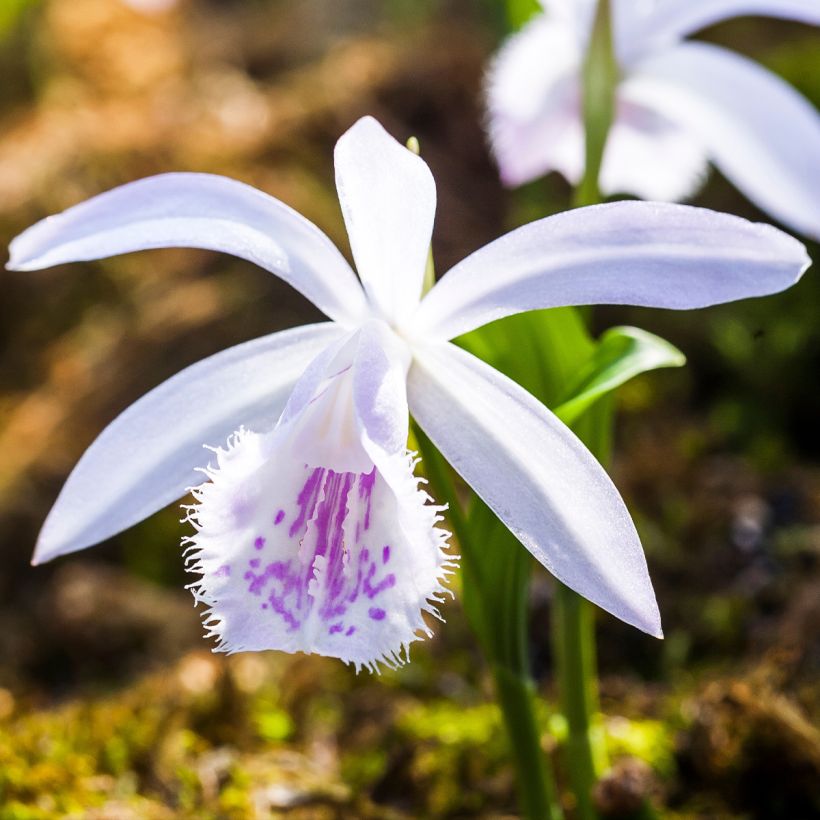

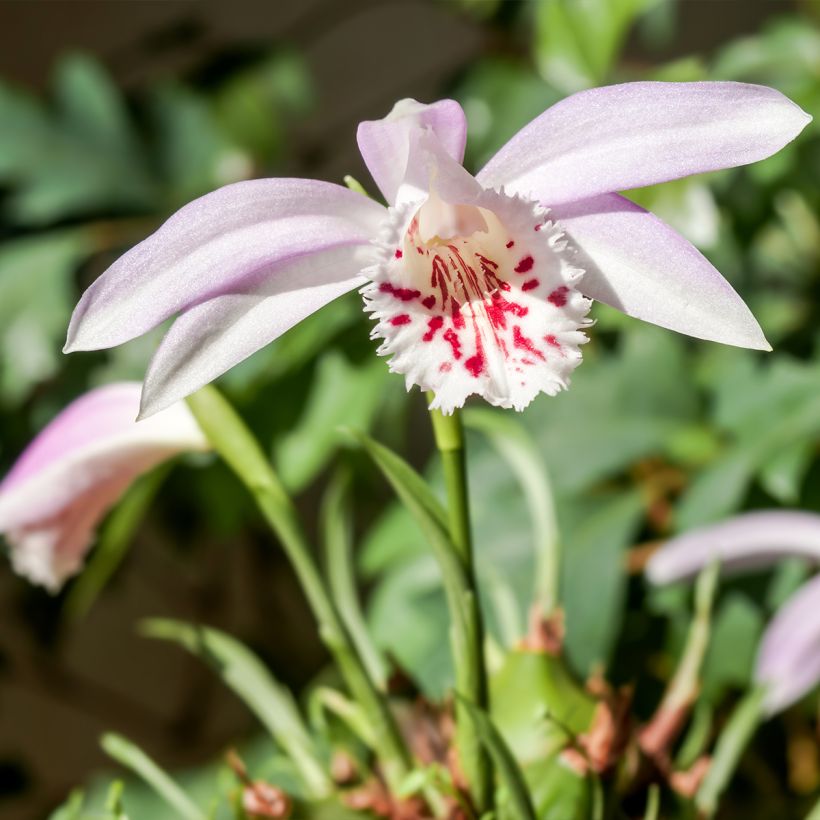

Flowering
Foliage
Plant habit
Botanical data
Pleione
formosana alba x grandiflora
Glacier Peak
Orchidaceae
Windowsill orchid
Cultivar or hybrid
Other Garden Orchids
Planting and care
Pleione 'Glacier Peak' likes protected environments, partial shade, light humus, always remaining slightly moist between March and September, but dry during the winter. In case of winter humidity combined with frost, the rootstock will rot. In dry soil, the young plant can withstand a short frost of up to -10°C (14°F) at most. In rockeries, winter protection is essential against the cold, but also against humidity. To do this, a layer of 20cm (8in) of leaf compost or shredded bark will be placed on the stump, and a waterproof cover will be placed on top of this tapetum. Growing in large pots or planters is also possible, in a mixture of 60% peat, 20% horticultural compost, and 20% coarse sand. Pleiones are quite demanding plants during the growing season: a weekly dose of geranium-type fertilizer at half strength from mid-May to mid-September will be very beneficial.
The bulb located at the base of the plant should not be completely buried: it should protrude at least half its height. Watering should be done with non-calcareous and non-chlorinated water.
Planting period
Intended location
Care
This item has not been reviewed yet - be the first to leave a review about it.
Spring flowering perennials
Haven't found what you were looking for?
Hardiness is the lowest winter temperature a plant can endure without suffering serious damage or even dying. However, hardiness is affected by location (a sheltered area, such as a patio), protection (winter cover) and soil type (hardiness is improved by well-drained soil).

Photo Sharing Terms & Conditions
In order to encourage gardeners to interact and share their experiences, Promesse de fleurs offers various media enabling content to be uploaded onto its Site - in particular via the ‘Photo sharing’ module.
The User agrees to refrain from:
- Posting any content that is illegal, prejudicial, insulting, racist, inciteful to hatred, revisionist, contrary to public decency, that infringes on privacy or on the privacy rights of third parties, in particular the publicity rights of persons and goods, intellectual property rights, or the right to privacy.
- Submitting content on behalf of a third party;
- Impersonate the identity of a third party and/or publish any personal information about a third party;
In general, the User undertakes to refrain from any unethical behaviour.
All Content (in particular text, comments, files, images, photos, videos, creative works, etc.), which may be subject to property or intellectual property rights, image or other private rights, shall remain the property of the User, subject to the limited rights granted by the terms of the licence granted by Promesse de fleurs as stated below. Users are at liberty to publish or not to publish such Content on the Site, notably via the ‘Photo Sharing’ facility, and accept that this Content shall be made public and freely accessible, notably on the Internet.
Users further acknowledge, undertake to have ,and guarantee that they hold all necessary rights and permissions to publish such material on the Site, in particular with regard to the legislation in force pertaining to any privacy, property, intellectual property, image, or contractual rights, or rights of any other nature. By publishing such Content on the Site, Users acknowledge accepting full liability as publishers of the Content within the meaning of the law, and grant Promesse de fleurs, free of charge, an inclusive, worldwide licence for the said Content for the entire duration of its publication, including all reproduction, representation, up/downloading, displaying, performing, transmission, and storage rights.
Users also grant permission for their name to be linked to the Content and accept that this link may not always be made available.
By engaging in posting material, Users consent to their Content becoming automatically accessible on the Internet, in particular on other sites and/or blogs and/or web pages of the Promesse de fleurs site, including in particular social pages and the Promesse de fleurs catalogue.
Users may secure the removal of entrusted content free of charge by issuing a simple request via our contact form.
The flowering period indicated on our website applies to countries and regions located in USDA zone 8 (France, the United Kingdom, Ireland, the Netherlands, etc.)
It will vary according to where you live:
- In zones 9 to 10 (Italy, Spain, Greece, etc.), flowering will occur about 2 to 4 weeks earlier.
- In zones 6 to 7 (Germany, Poland, Slovenia, and lower mountainous regions), flowering will be delayed by 2 to 3 weeks.
- In zone 5 (Central Europe, Scandinavia), blooming will be delayed by 3 to 5 weeks.
In temperate climates, pruning of spring-flowering shrubs (forsythia, spireas, etc.) should be done just after flowering.
Pruning of summer-flowering shrubs (Indian Lilac, Perovskia, etc.) can be done in winter or spring.
In cold regions as well as with frost-sensitive plants, avoid pruning too early when severe frosts may still occur.
The planting period indicated on our website applies to countries and regions located in USDA zone 8 (France, United Kingdom, Ireland, Netherlands).
It will vary according to where you live:
- In Mediterranean zones (Marseille, Madrid, Milan, etc.), autumn and winter are the best planting periods.
- In continental zones (Strasbourg, Munich, Vienna, etc.), delay planting by 2 to 3 weeks in spring and bring it forward by 2 to 4 weeks in autumn.
- In mountainous regions (the Alps, Pyrenees, Carpathians, etc.), it is best to plant in late spring (May-June) or late summer (August-September).
The harvesting period indicated on our website applies to countries and regions in USDA zone 8 (France, England, Ireland, the Netherlands).
In colder areas (Scandinavia, Poland, Austria...) fruit and vegetable harvests are likely to be delayed by 3-4 weeks.
In warmer areas (Italy, Spain, Greece, etc.), harvesting will probably take place earlier, depending on weather conditions.
The sowing periods indicated on our website apply to countries and regions within USDA Zone 8 (France, UK, Ireland, Netherlands).
In colder areas (Scandinavia, Poland, Austria...), delay any outdoor sowing by 3-4 weeks, or sow under glass.
In warmer climes (Italy, Spain, Greece, etc.), bring outdoor sowing forward by a few weeks.


































